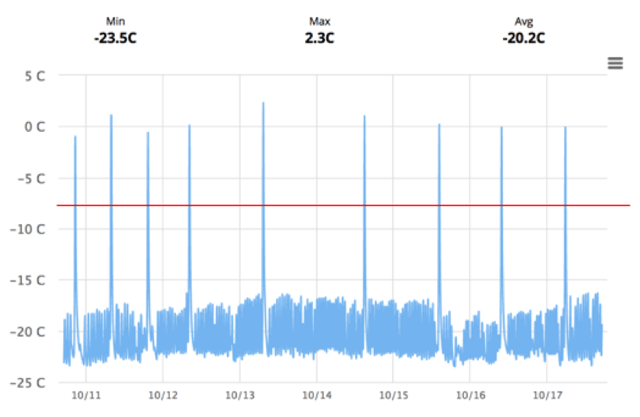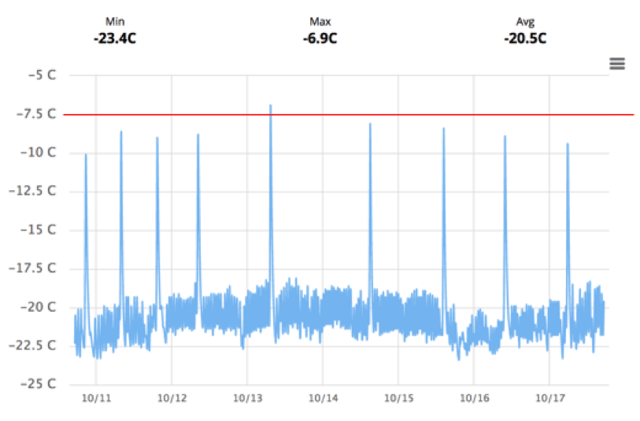Explore solutions built for your industry
Our customer-proven solutions monitor medications and food inventories for some of the most recognizable names in the industries of healthcare, food service, and transportation, and logistics. See how our solutions adapt to your industry needs.
SEE SOLUTIONSKroger Health Strengthens Compliance Visibility with SmartSense
Watch The VideoLEARN
Questions? Call +1 (866) 806-2653 to speak to our experts.
Schedule demoQuestions? Contact us.
Call +1 (866) 806-2653 to speak with our experts or get started with a demo.
CONTACT USAbout Us
SmartSense was created to use the power of the Internet of Things (IoT) to help our customers protect the assets most critical to the success of their business.
See our storyCONNECT. PROTECT. RESULTS.
Questions? Call +1 (866) 806-2653 to speak to our experts.
Schedule demoPlease select your login
January 4, 2018
Let’s Assess Product Simulation vs. Defrost Cycle Filtering
Act with confidence based on actual product temperature.
We love to build new things, and we love to apply those capabilities to customer challenges. It takes time to get to know each customer’s challenge and to get to why they are interested in a remote monitoring solution.
More often than not companies are looking to satisfy an array of stakeholders in regulatory compliance, risk management, loss prevention, and various other business areas. These stakeholders want information so they can make better data-driven decisions.
In one recent example, a pharmacy customer was concerned about getting false alarms due to freezers going through their normal daily defrost cycle. That concern is spot on because by setting the alarm notification thresholds on the freezer temperature to the values their regulatory body required for their medicines the defrost cycles on the freezers would trigger false alarms and waste the precious time of their pharmacists. This also may prompt pharmacists to discard perfectly safe medicines leading to product and financial loss.
When our customer came to us for help, they asked specifically if we could filter out the defrost cycles. We certainly can do that, but it became clear that guidelines for safe storage of the medicines would exclude defrost cycle detection and filtering as a viable solution for this particular problem.
Consider the impact of defrost cycles in this case: The temperature of the freezer increases for a short time above freezing to achieve the defrosting. The actual temperatures of the products stored in the freezer trail the changes in the environmental temperature depending on their thermal inertia. Typically, a defrost cycle will happen quickly and although the temperature of the freezer goes above freezing, the product temperature doesn’t. In this case, filtering on the defrost cycle would be fine. But, what if the defrost cycle takes longer than usual? Then if we have filtered out these warmer periods, we might actually have compromised product without any alarms going off. Not good.
SmartSense's solution for this problem involves a combination of our patented product temperature simulation models and a delay on the alarm for the amount of time the product has to be out of range before it is compromised. This way the number of false alarms are reduced and none of the actual alarms that matter aren't ignored by an unintelligent defrost cycle filter.
Compare these graphs to see the value of our solution. Both of these graphs have an alarm threshold of -7.5oC.

This graph displays raw temperature sensor data from a freezer. The defrost cycles are the peaks. A defrost cycle filter would ignore those peaks for the sake of reducing alarm volume but ignore potential product safety issues.

This graph displays data from the same freezer as the previous graph, but with our product temperature simulation feature in action. Notice the same defrost peaks as the previous graph as well as the temperature differences between the graphs. The product temperature simulation is intelligent enough to know that the product was actually out of range during one of the defrost cycles, so its safety should be investigated.
In this example, TempAlert’s solution would have generated zero false alarms as compared to nine with the normal freezer temperature monitoring. The defrost filter would have ignored a time when the product was compromised, but the product simulation would catch it.
We’re here to help, so please let us know what you need for your remote monitoring project.
Subscribe to our Blog!
Are you interested in learning more about continuous temperature monitoring solutions? Subscribe to our blog today!
Subscribe to the SmartSense Blog
Stay up-to-date on the evolution of IoT connectivity.
CONNECT. PROTECT. RESULTS.
Learn how our complete critical
environment monitoring solution will help you
connect and transform your business.
Call +1 (866) 806-2653 to speak with our industry
experts or get started by
requesting a demo.